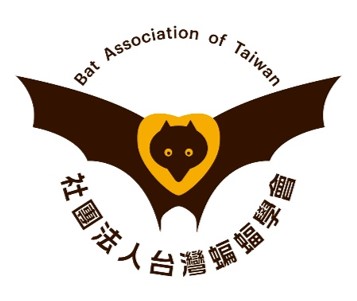蝙蝠研究
2018_台中市烏石坑地區玄彩蝠休眠使用之季節變化_林宇盛
出版年份:2018
研究生:林宇盛
分類:碩士論文
題目:台中市烏石坑地區玄彩蝠休眠使用之季節變化
Title:Seasonal variations in use of torpor in dark woolly bat, Kerivoula furva, in Wushihkeng area, Taichung
摘要:
休眠是哺乳類及鳥類於食物缺乏或較寒冷時節省能量及水分耗損的生理機制。休眠依據進入休眠時間的長短及發生季節,可分為日休眠及冬眠。溫帶地區的蝙蝠普遍具有冬天使用冬眠、其他季節使用日休眠的能力;然而,因為休眠的使用會延遲胚胎及幼蝠的發育,因此於生殖季時生殖雌蝠傾向減少使用休眠,並選擇溫度較高的棲所來降低維持較高體溫的能量需求,但當哺乳期結束後便會頻繁的使用休眠;雄蝠及未生殖雌蝠因無育幼壓力,傾向選擇溫度較低的棲所以利休眠的使用來節省能量。冬天時,溫帶地區的蝙蝠會選擇低溫的棲所進行冬眠,但冬眠期間會週期性的甦醒,每段休眠的持續時間從數日到數週不等。過去有關蝙蝠休眠的相關研究主要以溫帶性物種為主,熱帶及亞熱帶蝙蝠是否具有休眠能力相關研究較少。許家維(2016)發現亞熱帶台灣烏石坑地區的玄彩蝠(Kerivoula furva)利用台灣芭蕉(Musa formosana)作為日棲所,夏天時繁殖母蝠與幼蝠會形成生殖群,幼蝠在斷奶後仍與母蝠棲息在同芭蕉捲葉,時間從數月到超過一年不等,冬天時並有蝙蝠群連續三天利用同一捲葉棲所的紀錄,推測其進入冬眠狀態。因此本研究測試以下假說:一、玄彩蝠在夏季哺乳期結束後具有日休眠能力、冬季具有冬眠能力;二、玄彩蝠的冬季是否使用冬眠及休眠持續時間會受到環境溫度的影響。本研究在2017年6月26日至2017年8月23日玄彩蝠哺乳期結束後進行夏季試驗,2017年12月1日至2018年2月9日進行冬季試驗,在台中市和平區烏石坑地區捕捉玄彩蝠個體,並以感溫式無線電發報器追蹤體溫變化以了解其休眠及棲所使用狀況。結果顯示,夏季共追蹤10隻成體雌性及2隻成體雄性個體、冬季共追蹤9隻成體雌性及1隻成體雄性個體,追蹤期間所有個體均以台灣芭蕉捲葉作為棲所。夏天時雄性及雌性個體均有日休眠的紀錄,但休眠頻度皆低(雌性1.4 %,雄性0.7 %),與溫帶地區繁殖雌蝠於哺乳期結束後便較頻繁使用休眠的結果不同。冬天時,所有玄彩蝠個體皆會使用日休眠及冬眠,休眠比例佔79.0 %,從休眠中甦醒的時間多發生於日落後2小時內。玄彩蝠冬天時的休眠持續時間隨著棲所外溫度的增加而變短,但平均休眠持續時間顯著比溫帶地區的蝙蝠短。夏季及冬季蝙蝠是否進入休眠均明顯受捲葉外溫度的影響。本研究為第一篇有關彩蝠屬物種的休眠研究,未來可以作為評估氣候變遷對此物種的影響依據。
Abstract:
Torpor is a physiological adaptation used by mammals and birds to save energy and water during periods of food shortage and cold weather. Torpor can be divided into hibernation and daily torpor; hibernation has torpor bouts >24 hours and occurs in winter, whereas daily torpor has torpor bouts <24 hours and could occur in any seasons. Daily torpor and hibernation are widely used by temperate bats. Use of torpor, however, has a negative impact on development of fetus and growth of young. Thus, reproductive females tend to use less torpor during reproduction seasons. Consequently, reproductive females were found to inhabit warmer roosts to reduce metabolic costs of maintaining normothermic. Males and non-reproductive females, which do not have a burden of nursing young, are free to enter torpor more frequently and use cooler roosts to save energy. In winter, temperate bats typically choose a cool roost for hibernation; hibernating bats arouse periodically with torpor bouts ranging from a few days to several weeks. Little is known about whether tropical and subtropical bat species are capable of entering torpor. Hsu (2016) found that the dark woolly bat (Kerivoula furva) uses furled banana leaves as day roosts. In summer, reproductive females and their young form breeding groups. The pups remained in their natal groups for several months to over one year. In addition, a group of bats were found to use the same roost for consecutive three days in winter, suggesting entering hibernation. This study aimed to test the following hypothesis: First, the dark woolly bats use daily torpor in summer after lactation and use hibernation in winter. Second, the use of hibernation and torpor bout influenced by ambient temperature. I used thermal-sensitive transmitters to study the roost and torpor use of dark woolly bats in Wooshikeng area, Taichung City. I conducted the summer study during post-lactation from June 26, 2017 to August 23, 2017 and winter study from December 1, 2017 to February 9, 2018. I tracked 10 adult females and two adult males in the summer, and nine adult females and one adult male in the winter. The results showed that all individuals roosted in furled banana leaves during the tracking periods. In the summer after lactation, a few individuals were found to enter daily torpor with short torpor bouts; the frequency of torpor use was low in both males and females, different from temperate bats that reproductive females frequently use torpor during post-lactation. In the winter, all individuals tracked frequently used daily torpor and hibernation. The arousal from torpor occurred mainly within 2 hours after sunset. In the winter, the torpor bouts of dark woolly bats decreased with the increasing ambient temperature, and the average torpor bout of K. furva was shorter in contrast with that of temperate bats. The use of daily torpor or hibernation in dark woolly bats was influenced by ambient temperature. This study is the first on torpor use in the genus Kerivoula, which can be used as a basis for assessing the impact of climate change on this species.
